Kyoto Events in January 2024
Kyoto, known for its rich cultural heritage and vibrant traditions, always captivates visitors with its diverse festivities. From traditional ceremonies to contemporary celebrations, this enchanting city offers a delightful blend of ancient charm and modern allure. January 2024 in Kyoto promises a tapestry of captivating events, fusing ancient traditions with contemporary expressions.
| Date | Event | Category |
|---|---|---|
| Early January, 2024 | Hatsumōde | Traditional Ceremony |
| January 1st, 2024 | Okera Mairi at Yasaka Shrine | Traditional Ceremony |
| January 1st-3rd, 2024 | Nijo-jo Castle Garden Special Opening | Cultural Experience |
| Mid January, 2024 | Hadaka Odori | Traditional Dance |
| Mid January, 2024 | Ōmato Archery Competition | Sports/Competition |
| January 6th-8th, 2024 | Gafūten Shōhin Bonsai Exhibition | Exhibition |
| January 15th. 2024 | Okayu-sai | Traditional Customs/Rituals |
| Janurary 4th, 2024 | Kemari Hajime | Traditional Game |
| Early – Mid Jan 2024 | Toka Ebisu Festival | Festival |
| January 15th-19th, 2024 | Yakuyoke Taisai Festival | Festival |
| Mid January, 2024 | Musha Jinji | Festival |
| January 20th, 2024 | Yutate Kagura | Traditional Performance |
| Late January -Early February, 2024 | Kayabuki no Sato Snow Lantern Festival | Festival |
Hatsumōde: The First Shrine Visit of the Year
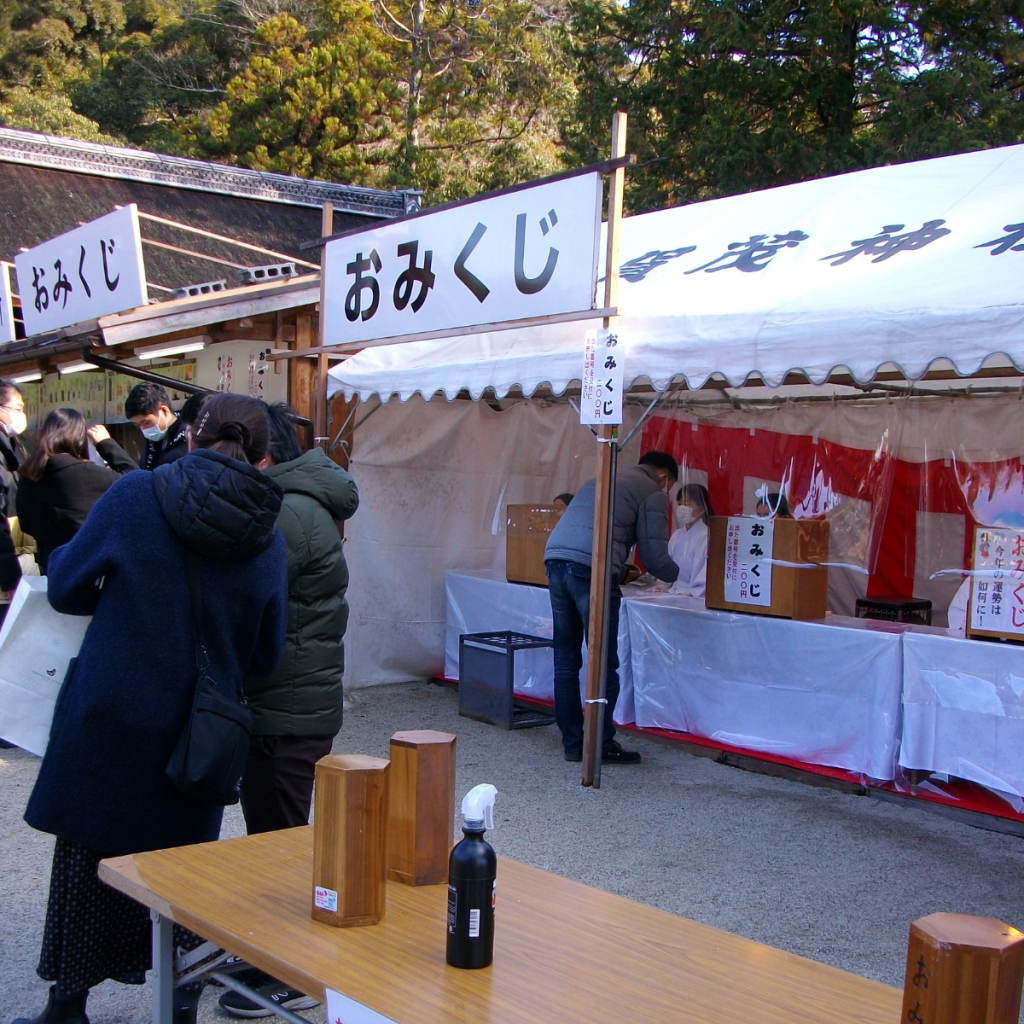
Date: Early January (January 1st)
In Japan, ringing in the New Year isn’t complete without the tradition of hatsumōde. This practice sees locals and tourists alike flocking to shrines and temples to offer their first prayers for the forthcoming year.
Hatsumōde: A Blend of Faith and Tradition
The commencement of a new year is traditionally celebrated with hatsumōde, the first shrine or temple visit. Irrespective of one’s religious affiliations, this custom is central to many Japanese families’ celebration of the New Year. Although it’s referred to as “the first shrine visit of the New Year”, it doesn’t necessarily need to be on January 1st. Residents usually go within the first week of January, with some already lining up at different shrines from as early as New Year’s Eve.
During hatsumōde, devotees visit a local shrine or an acclaimed one, with hopes of gaining good luck for the coming year. The aspirations aren’t just confined to fuelling hope for good fortune. People also pray for individualistic undertakings like success in career, romance, academic excellence, and maintaining robust health.
Traditional Practices
Various shrines and temples set about special rituals during hatsumōde, catering to visitors who seek blessings for their year ahead. Some even offer small sips of sake, giving individuals respite from the cold winter months. Amongst all traditions though, one stands out; it is the opportunity to purchase a hamaya. This special arrow charm, sold only during New Year’s season, is often displayed in homes as a symbol of good luck.
The most popular destinations for hatsumōde are usually famous shrines or temples in Kyoto, including Fushimi Inari Taisha, Jishu Shrine, and Kitano Tenmangū.
Kyoto’s Yasaka Shrine Okera Mairi 2024
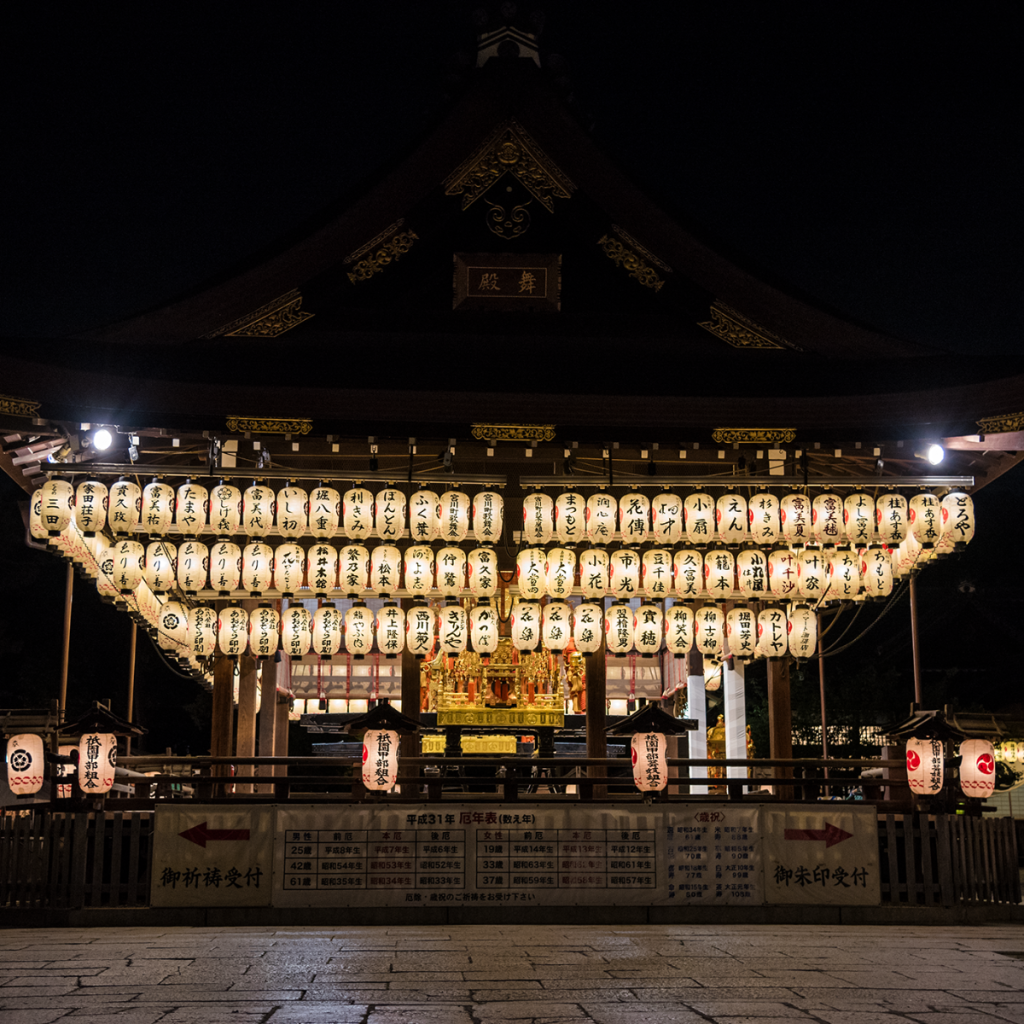
Date: January 1st, 2024
Kyoto’s famous Yasaka Shrine is preparing for its annual New Year tradition: the Okera Mairi ceremony. The event, which takes place from 7 p.m. on December 31 to 5 a.m. on January 1, draws crowds eager to welcome the new year with good fortune and prosperity.
Enchanting Bonfires
The centerpiece of the Okera Mairi is the lighting of bonfires with okera tree roots. These sacred fires are used to cast away negative energies from the previous year, making way for good fortune in the new one.
Furthermore, visitors turn these flames into portable beacons of good luck. They light lengths of bamboo rope from the bonfires and walk home while keeping them alight by swinging them continuously. Before leaving the shrine grounds, participants ensure that their ropes are extinguished.
Toro Lanterns and Bamboo Rope Rituals
At Yasaka-jinja’s precincts, two toro lanterns lit by the okera root fires stand prominently. In a ceremonial procession, participants flock towards these lanterns and light their bamboo robes to bring success into their lives.
Homegrown Good Fortune
Upon returning home, ceremony attendees use their sacred flames to light candles on their household altars or prepare zoni soup—a traditional Japanese dish containing chicken, vegetables, and mochi—believed to bring auspiciousness when consumed on New Year’s Day.
Access and Preparation for Okera Mairi
The Yasaka Shrine is conveniently located a 10-minute walk up Shijo Dori from Gion-Shijo Station. Participants planning to attend Okera Mairi should keep in mind that overnight transportation is limited due to the festival’s late-night hours. Planning lodging or alternate transportation accordingly is recommended.
Tips for First-Time Attendees
Those wishing to participate in Okera Mairi 2024 should note several essential details. Bringing home embers for zoni soup or lighting a candle is customary, and many visitors may struggle to keep the fire alight on their journey home. Additionally, the burnt bamboo ropes can be hung in one’s kitchen as an amulet to protect against fires.
A Rich Cultural Experience
As a beloved Shinto tradition, Okera Mairi offers both locals and tourists a chance to immerse themselves in Japanese culture at the revered Yasaka Shrine. With its fragrant herbs, enchanting fires, and unique rituals, attending Okera Mairi is bound to leave an indelible impression on all who take part in this age-old ceremony.
Nijo-jo Castle Garden Special Opening
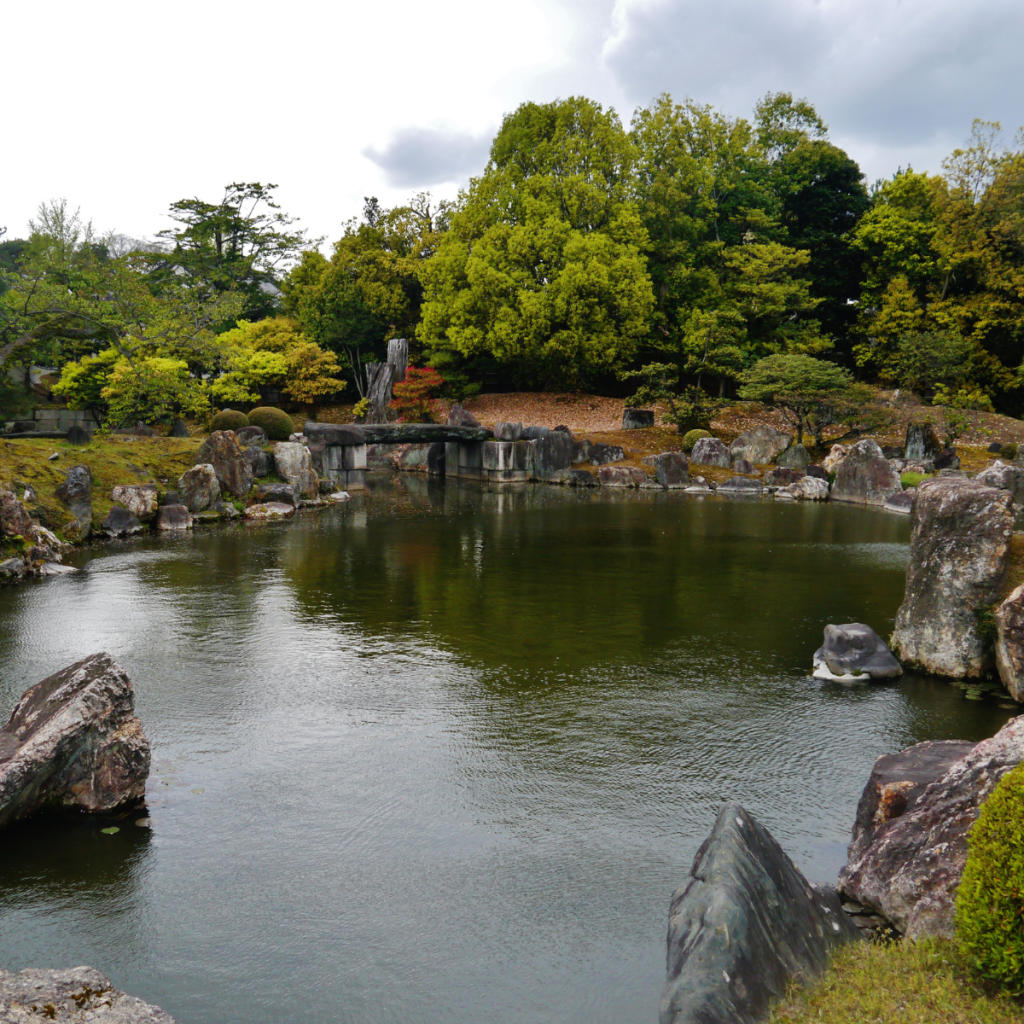
Date: January 1st-3rd
A Rare Opportunity to Experience the Beauty of Japan’s Treasured Castle Gardens
In a unique event, the Nijo-jo Castle gardens will be opened to the public in January, allowing visitors to experience the beauty and serenity of these traditional Japanese-style gardens.
Nijo-jo Castle serves as an emblem of Tokugawa Ieyasu’s power in Kyoto, housing numerous valuable remains and attractions such as the national treasure Ninomaru-goten Palace. Constructed after Tokugawa Ieyasu’s triumph in the Battle of Sekigahara in 1600, Nijo-jo Castle has stood as a symbol of unity for over 410 years. In recognition of its historical significance, it was designated a UNESCO World Heritage Site as part of the “Historic Monuments of Ancient Kyoto” in 1994.
Castle Attractions and Architectural Highlights
Originally built at Nijo-jo Castle was the Ninomaru Palace rather than the Honmaru-goten Palace. The Kara-mon Gate, known for its elegant gable with carvings and ornamental metal fittings under the eaves, was constructed later on higher ground than the Tsuiji roofed mud wall to mark Emperor Go-Mizunoo’s visit.
Situated beyond the Kara-mon Gate is the only remaining early Edo period structure within the castle grounds – The National Treasure Ninomaru-goten Palace. This expansive area consists of six interconnected buildings — Tozamurai, Shikidai, Ohiroma, Sotetsu-no-ma, Kuro-shoin, and Shiro-shoin — arranged in a flying-geese formation. The Ohiroma’s First and Second Rooms hold special significance as the sites where the last shogun Tokugawa Yoshinobu announced the Restoration of Imperial Rule. Furthermore, the castle also boasts of the Ninomaru Garden, a Shoin-zukuri style garden skillfully redesigned by Kobori Enshu.
The Honmaru was erected by Tokugawa Iemitsu in 1626 to commemorate Emperor Go-Mizunoo’s visit. Although initially embodying the dignity and grandeur of a castle with a five-story tower and five main buildings, most of its structures were destroyed by lightning and fire. Consequently, Nijo-jo Castle now resembles a stately samurai residence rather than a castle. The current Honmaru-goten Palace was relocated from the former Katsura-no-miya Palace within Kyoto Imperial Palace during the Meiji period and is recognized as an important cultural property.
Kemari Hajime
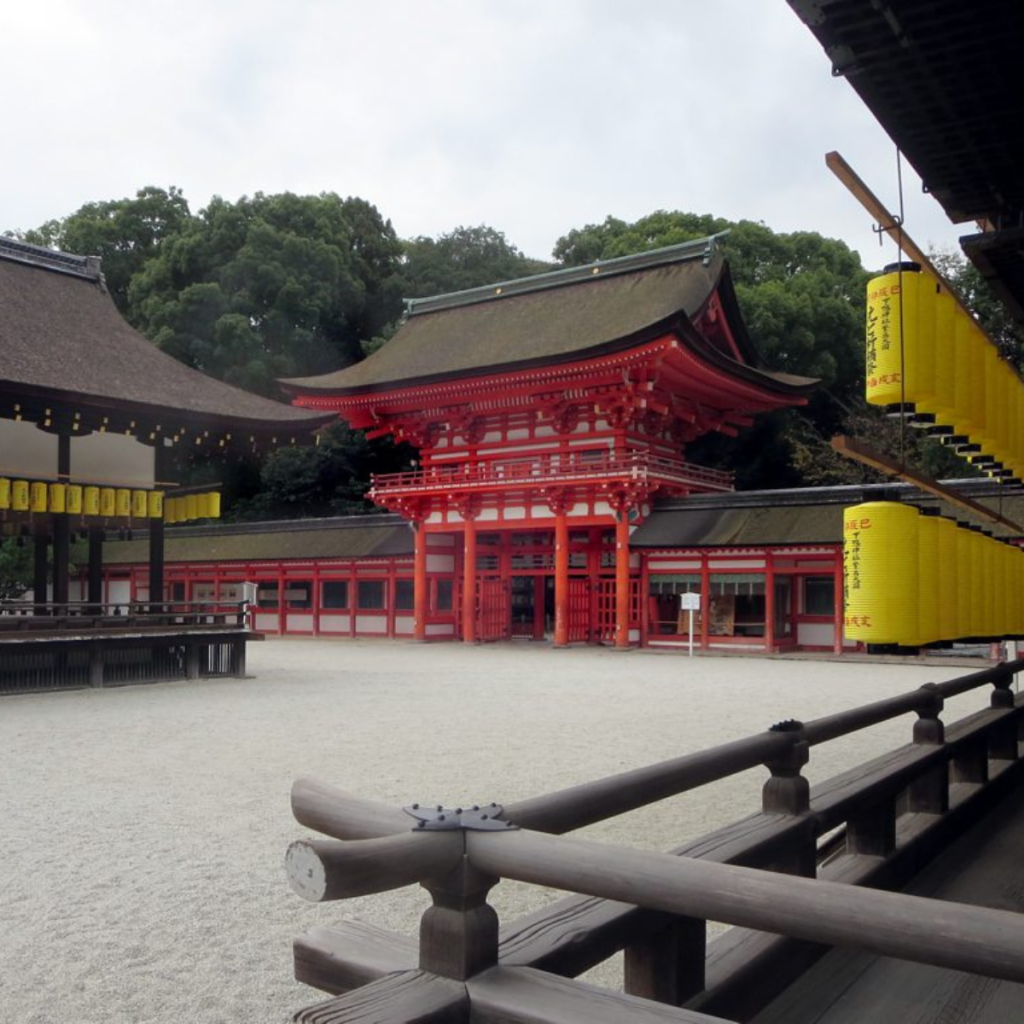
Date: January 4th, every year
A Festival Dedicated to the Gods
Every 4th of January, Kyoto’s Shimogamo Shrine hosts the Kemari Hajime festival, a celebration that marks the first Kemari match of the year. The event is held in honor of the gods and dates back to the Heian period (794 to 1185). Historical records show that Kemari was introduced to Japan from China and gained popularity among Japanese nobles before spreading to other social classes. The game disappeared during the Meiji restoration (1868 to 1912) but was revived around 1903 with the establishment of the Kemari Preservation Society.
The Ball and Costumes of Kemari
Kemari is played with a ball called “mari,” made out of deer skin, weighing approximately 150 grams. This material is consistent with that used in ancient times. Players dressed in traditional colorful court costumes, which include Eboshi Caps, Suikan jackets, and Hakama trousers, kick the “mari” around.
Past Kemari events have drawn notable attention. In 2013, a commentator from a Brazilian sports channel attended the festival in relation to that year’s Soccer World Cup. A Weight Lifting World Champion has even participated in a game of Kemari.
Rules and Etiquette at Kemari Hajime
Kemari is unique as there are no declared winners or losers. The outcome depends on yells called “ari,” “ya,” and “ou,” with “ou” being crucial for determining a player’s proficiency. Like modern ball games, spectators clap and cheer on players throughout the match.
Etiquette during the festival includes being mindful of the limited space and fast-growing crowds. Visitors should be cautious when taking photos and ensure both their own safety and that of others around them.
History and Tradition: From Asuka to the Present Day
Thought to originate from the Asuka Period (6th to 8th centuries), Kemari gained popularity among nobles during the Heian Period. It spread further from the court to the samurai class and then to the general public. The game declined after the Meiji Restoration but was later revived in 1903 with the establishment of the Kemari preservation group “Shukiku Hozonai.”
During a match, players kick the ball around while shouting “Ya”, “Ari” or “Ou” on a field called Shihon-kakari. Four trees—a cherry, willow, maple, and pine—mark each corner of the playing field, contributing to its symbolism. Kemari’s rich history includes connections with Japan’s Taika Reforms and notable players like Fujiwara no Narimichi dubbed “The Saint of the Ball.”
Kemari Events Held at Shrines
In premodern times, Mari hajime events took place on January 4 annually, performed by members of prestigious families as offerings. Today, these events continue at various shrines around Kyoto and other regions. For example, in addition to Shimogamo Shrine’s Kemari Hajime festival, Shiramine-jingu Shrine in Kyoto holds Kemari events on April 14 and July 7 with participants from the Kemari Preservation Society.
Thanks to Emperor Meiji’s imperial edict and donation for preserving Kemari in 1903, this ancient ball game lives on as a New Year’s Shinto ritual across Kyoto and beyond.
Toka Ebisu Festival
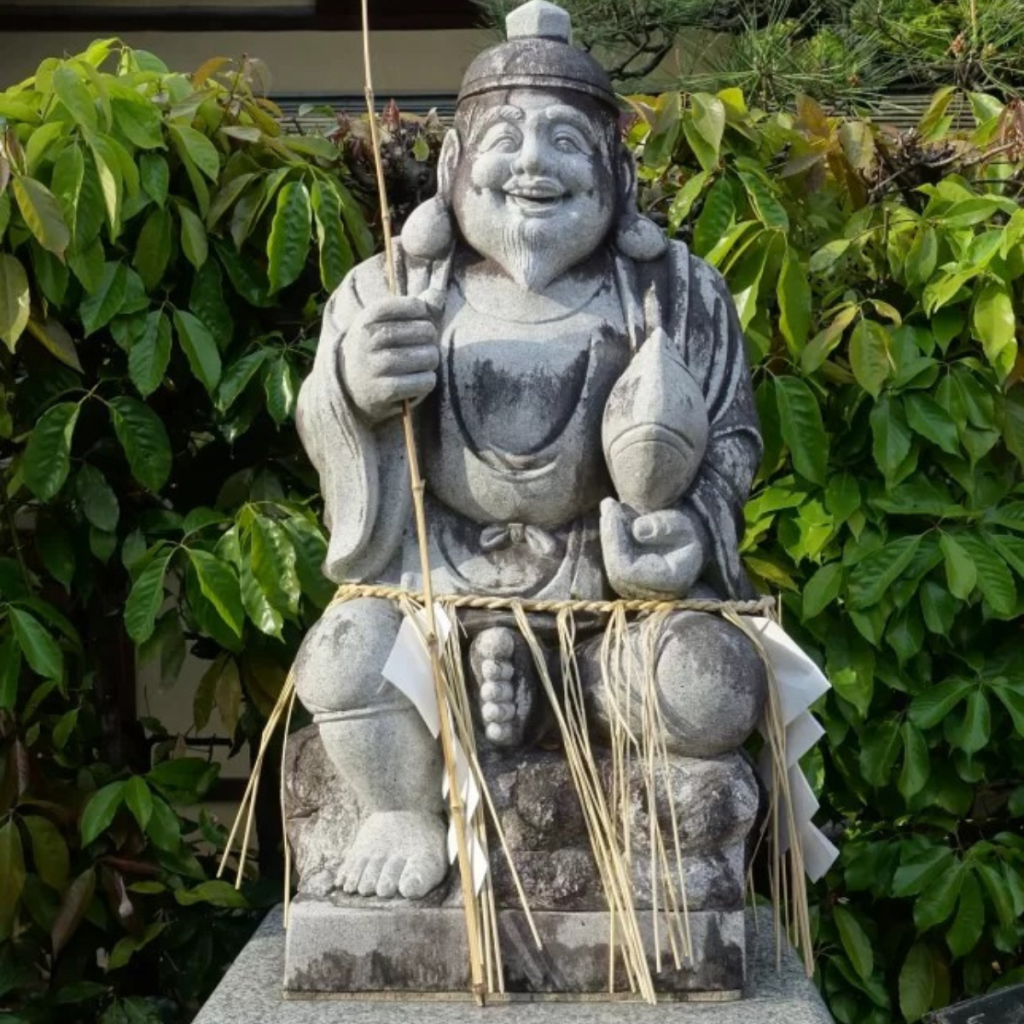
Date: Early – Mid Jan 2024
Celebrating Ebisu, the God of Fortune
From January 8th to 12th, Kyoto’s Gion district comes alive with colorful festivities as it hosts the annual Toka Ebisu Festival. This major event attracts thousands of visitors seeking blessings from Ebisu, the Japanese god of prosperity and good fortune. Known affectionately as “Ebis-san,” this deity has special significance for merchants, fishermen, and workingmen. The festival dates back to the Edo era (17th-19th century) and is the year’s first significant event in the city.
Rituals and Prayers at Yasaka Shrine
The heart of the Toka Ebisu Festival takes place at the scenic Yasaka Shrine. Here, visitors from across Japan flock to offer their prayers for prosperity in work and business. Central to the celebration are Fuku-zasa, branches of lucky bamboo grass that have been sanctified through a special ritual. Attendees purchase the bamboo branches along with various talismans and charms designed to invoke success and affluence.
To properly partake in prayer, participants first offer a coin into a donation box before bowing twice deeply, clapping twice, spending a moment in contemplation, then delivering a final bow. In accordance with an old legend that suggests Ebisu suffers from hearing difficulties, believers proceed to knock on a wooden board near the main altar after completing their prayers.
Kagura Dance & Other Performances
During the five-day festival, spectators can indulge in several artistically captivating events associated with Toka Ebisu Festival traditions. One such ritual is the Kagura Dance performed by shrine maidens, who dance gracefully to pipe-and-drum tunes as part of an ancient shamanic rite intended to summon gods. The dance is held regularly throughout the festival to bless and purify the bamboo grass branches.
Another customary event is the Yudate Kagura ritual, where a maiden immersed bamboo grass in a pot of boiling water before the altar and then sprinkles it on the gathered crowd. Other happenings include the Mochi Rice Pounding Ritual – a traditional Japanese New Year food preparation event – and the Lucky Maguro Tuna Dedication, where local fishermen offer an auspicious 150kg tuna to Ebisu before the main altar. The colorful Hoekago Parade consists of performers dressed in Edo-themed attire making their grand entrance at the shrine alongside shrine maidens.
Geisha District Performances
The Toka Ebisu Festival presents spectators with rare opportunities to observe maiko, apprentice geishas from Gion district. On January 11th, maiko from Gion and Miyagawa switch places between afternoon and evening, serving attendees with lucky rice cakes and bamboo branches within Yasaka Shrine’s main hall.
A Feast of Food Stalls and Attractions
As with most Japanese festivities, Toka Ebisu Festival features an abundance of food stalls known as “Yatai.” These lively booths offer a wide array of delicious snacks, drinks, and treats that are sure to tempt taste buds while creating unforgettable memories for visitors.
The Toka Ebisu Festival presents an enthralling cultural experience for anyone wishing to immerse themselves in the vibrant customs of Kyoto. Attendees not only participate in traditional rituals but also enjoy food, entertainment, and a cheerful atmosphere brought forth by Ebisu – the god of prosperity and good fortune.
Gafūten Shōhin Bonsai Exhibition
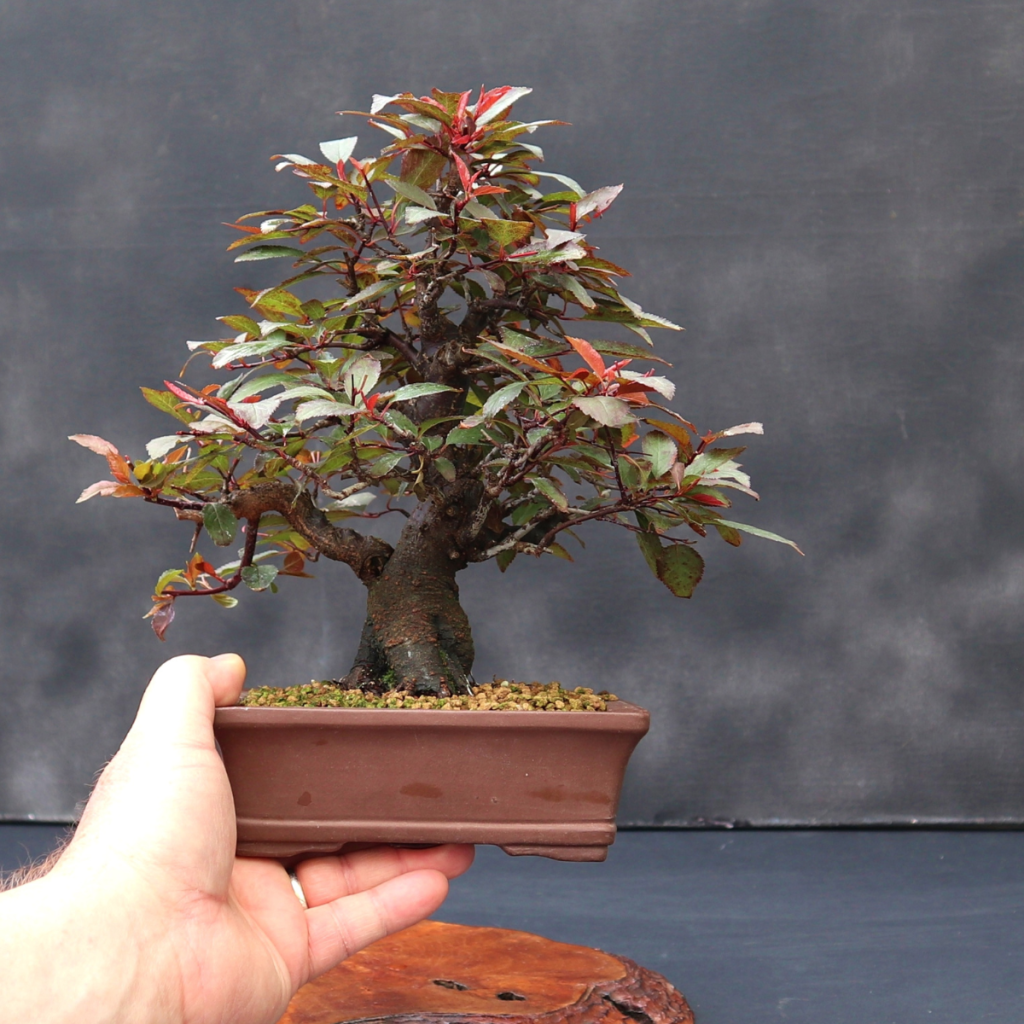
Date: January 6th – 8th
All Japan Shōhin Bonsai Association Organizes the Exhibition Every Year
The All Japan Shōhin Bonsai Association, a renowned organization dedicated to the art of bonsai, is once again hosting its annual event, the Gafūten Shōhin Bonsai Exhibition. Taking place from January 8th to 10th at Miyako Messe in Kyoto, this prestigious gathering brings together artisans who have devoted their life to nurturing and sculpting these compact trees.
Understanding the Intricacies of Shōhin Bonsai
Shōhin bonsai is a unique category within the vast world of bonsai—one where tree miniaturization takes on an impressive new level. Plants in this category are intentionally kept under 20 centimeters tall. Although their small stature might seem less troublesome, it actually requires a heightened level of care, attention, and finesse to tend to these plants.
Contrary to popular belief, these downsized plants often need more meticulous grooming than their larger counterparts—a testament to Japanese precision and care for detail.
Exhibition Highlights: Competitions, Workshops, and More
Gafūten offers much more than just viewing masterpieces. Included in the exhibition’s itinerary are numerous fascinating segments.
Annual Competition and World Photo Contest
Artisans can submit their carefully crafted bonsai for judgement in an annual competition—one where only the most distinguished pieces achieve recognition. Alongside this competition is the World Shōhin Bonsai Photo Contest. This contest enthralls audiences with images of shōhin bonsai from around the globe, further widening cultural horizons and adding an international flavor to the event.
Seminars and Demonstrations
The exhibition also arranges for various bonsai-related seminars aimed at educating attendees about different aspects of shōhin bonsai cultivation. Artisans demonstrate live flowerpot making—a process as captivating as it sounds.
Hadaka Odori
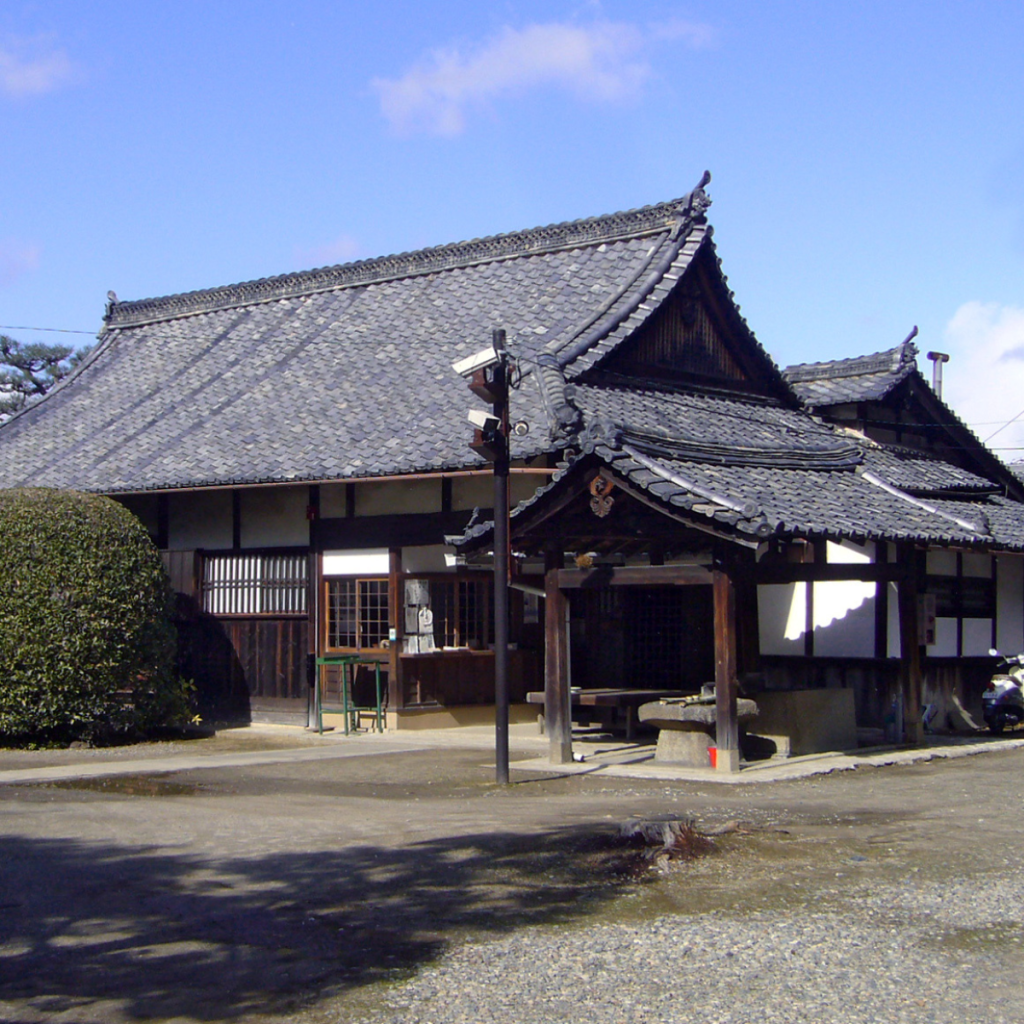
Date: Mid January
Hadaka Odori Brings a Unique Close to New Year Festivities in Kyoto
Hokaiji Temple in Kyoto presents a unique spectacle as the New Year festivities draw to an end with the traditional ‘Hadaka Odori,’ or Naked Dance. The custom that has been observed for about 250 years since the Edo Period sees local boys and men, clad only in a loincloth, perform on the temple stage.
Chanting “‘Chorai” For Blessings and Prosperity
In this unique performance, participants chant “Chorai,” seeking blessings from Buddha for their families and themselves. However, the Hadaka Odori is not just a spectacle but has profound religious significance, serving as a prayer seeking happiness for the community and personal wish fulfillment.
The ceremony commences at 19:00, beginning with an invocation in the main hall of Hokaiji Temple. However, the procession that follows captivates attendees – boys and men baring almost all in a festive dance performance seeking divine intercession.
The Dance of Harvest – A Communal Prayer
At its core, like many other religious events in Japan, Hadaka Odori is fundamentally a communal prayer for a bountiful harvest. It’s not just a demonstration of cultural richness but also represents hopes and fervent desires of an entire community.
The dance, performed with boisterous mirth, symbolizes optimism for agricultural abundance. Furthermore, it embodies wishes for tranquility within local communities and individual aspirations.
Ōmato Archery Competition
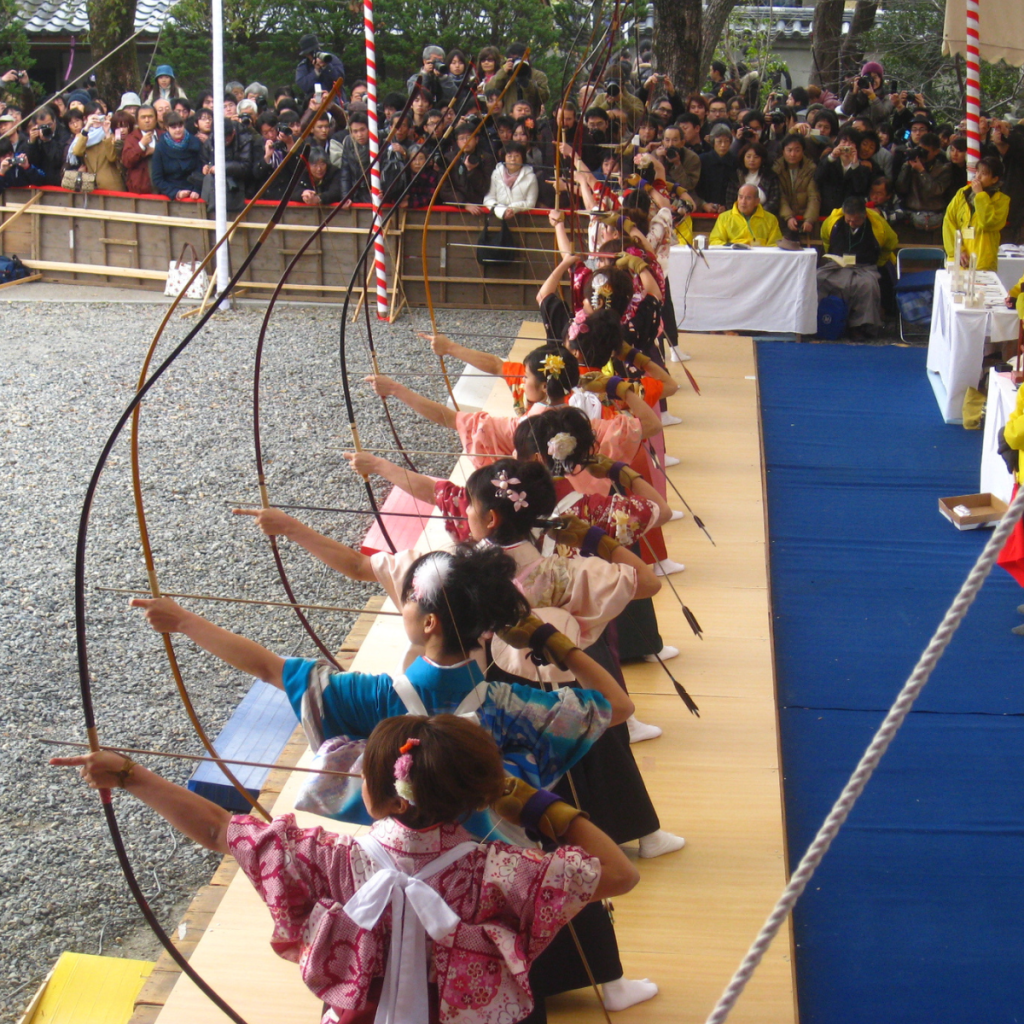
Date: Mid January
History of the Archery Competition
Ōmato Taikai, otherwise known as the Festival of the Great Target, is a grand archery contest that stems from an earlier competition known as Tōshiya. Dating back to the early Edo period in the 17th century, Ōmato Taikai has evolved into a major cultural event attended and revered by many across Japan. Also known as “second Sunday of January”, it adds a spiritual touch to archery with its location being Sanjūsangen-dō, the temple of 1,000 Buddhas.
The Participants
The participants of this grand spectacle come from diverse backgrounds around Japan. With approximately 2,000 participants every year, this archery contest holds importance in Japanese society. It isn’t just restricted to professional archers – young people who have just reached adulthood also take part.. This effectively makes the contest part of their coming-of-age celebrations. The careful blend of youth and experience results in an intense competition.
Furthermore, spectators also flock in hordes to witness the unusual sight of kimono-clad young women gracefully handling bows and arrows. The participators’ skill, paired with their traditional attire, adds to the unique charm and beauty of this event.
Okayu-sai
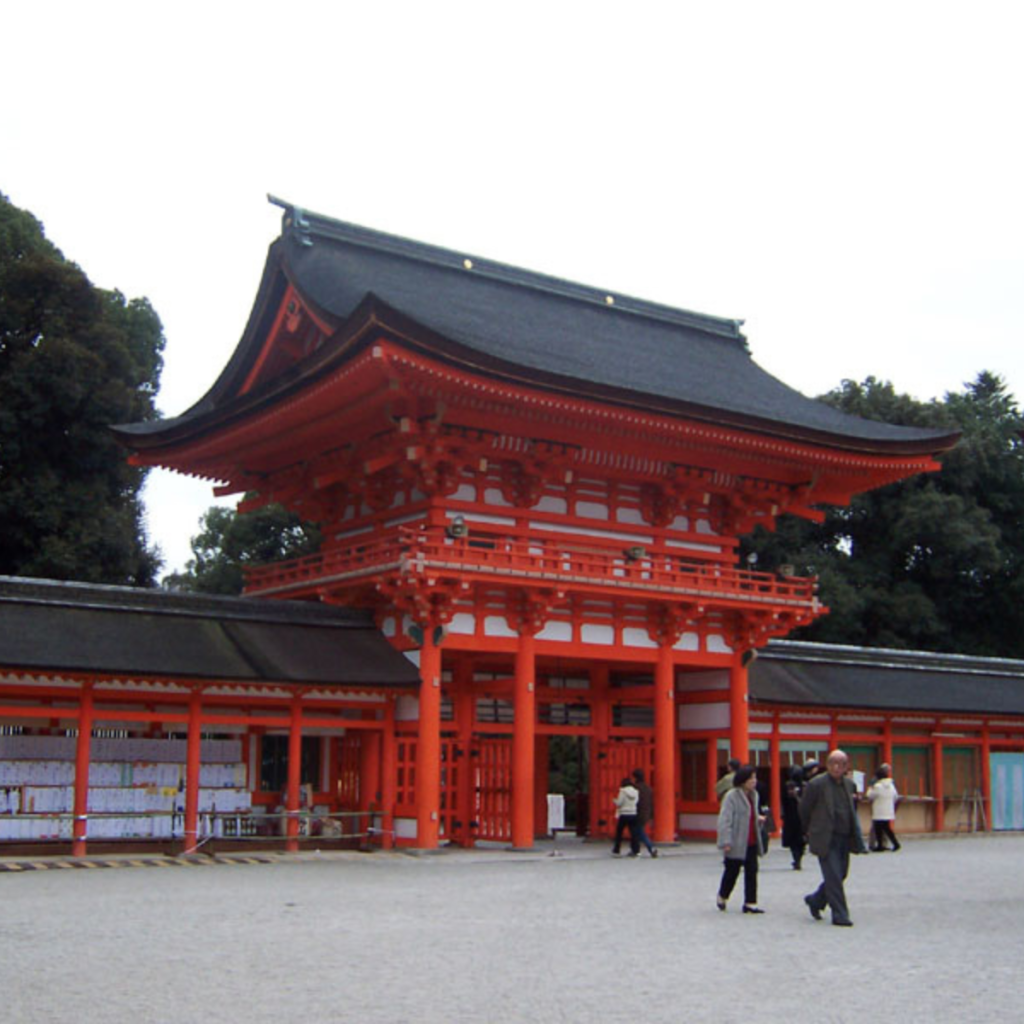
Date: January 15th
Traditional Customs and Rituals on Ko-shogatsu Day
On January 15th, Japan celebrates a day known as “ko-shogatsu” which marks the small New Year and the end of the New Year’s period that began on January 1st. During this time, unique customs and rituals are observed by many across the country. People hang rice cake flowers called mochi-bana, burn New Year’s decorations like pine branches, and consume red bean porridge as part of the celebrations. In Kyoto, temples and shrines organize various festivities related to the small New Year, with one such event being the Okayu-sai at Shimogamo Shrine.
The Ceremony: Offering Red Bean Porridge for Health and Prosperity
The Okayu-sai festival is held annually at Shimogamo Shrine on January 15th to celebrate the small New Year. As part of this celebration, red bean porridge and soybean porridge are dedicated to gods in order to pray for a bountiful harvest and national peace. The red bean porridge, in particular, is believed to have the power to expel evil spirits, preventing illness or accidents throughout the year. As a World Heritage Site known for its special spiritual energy, participating in this ritual may offer a strong sense of reassurance in achieving perfect health.
Dedicating Different Colored Porridges to Gods
The porridges prepared for the ceremony come in two colors – red and white. The white porridge is made with soybeans and chestnuts, while the red porridge consists of red beans and red rice. Both porridges are presented on trays as offerings before gods in the Main Hall of Shimogamo Shrine as a symbol of gratitude and supplication.
Simogamo Shrine’s Unique Red Porridge Recipe
In addition to standard ingredients, the red porridge recipe used at Shimogamo Shrine includes soft mochi (rice cake) pieces. These pieces are taken from the kagami-mochi, a ceremonial rice cake offering made to the gods during the New Year period. By breaking apart and eating this kagami-mochi after ko-shogatsu (January 15th), people believe they receive divine strength and blessings from the gods.
Participating in Okayu-sai: Tasting the Red Bean Porridge
At around 11 o’clock, visitors of Shimogamo Shrine can partake in tasting warm red bean porridge during the Okayu-sai festival. The porridge has a mildly sweet taste, allowing participants to savor the natural flavors of rice, beans, and mochi. Each bowl is priced at 300 yen and is available until supplies run out.
Encountering unique customs and participating in age-old rituals such as Okayu-sai adds a rich cultural experience to your visit to Kyoto. Moreover, the opportunity to taste delicious red bean porridge while praying for one’s health and well-being at a revered site like Shimogamo Shrine is an experience that should not be missed.
Yakuyoke Taisai Festival
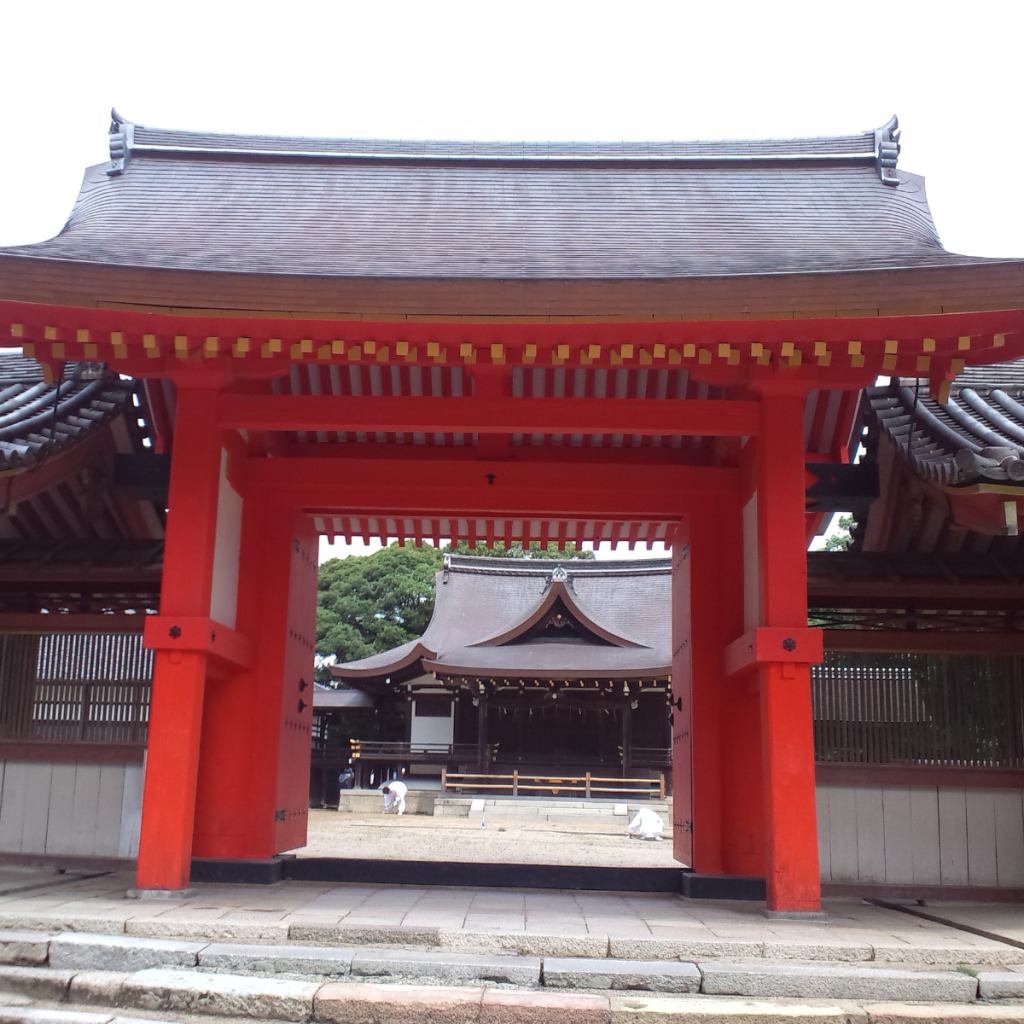
Date: January 15th-19th
The Largest Yakuyoke Ritual for Removing Evil and Attracting Luck
Every year from January 15 to 19, the Iwashimizu-hachimangu shrine in Yawata city, just south of Kyoto, hosts the largest Yakuyoke Taisai festival. Situated about 50 minutes from Kyoto station, the renowned shrine is widely recognized as an apotropaic location where individuals come to pray for protection against evil and to attract good fortune.
Known as Yakuyone in Japanese, this event takes place at a time filled with powerful energy for dispelling evils in one’s life. On the last day of the festivities, January 19th, the culmination of events occurs, known as the Shono Shinji ritual. During this ceremony, priests burn old talismans and charms from the previous year in an effort to cleanse away negative spirits. This ritual’s conclusion sees specially purified rice cake mochi, said to bring luck and keep evil at bay, given to visitors.
Dedication of Satokagura: A Dance of Grace Amidst Flames
After burning old talismans and charms while praying for protection and good fortune, a uniquely elegant spectacle awaits. A female attendant performs a traditional dance called Satokagura, moving gracefully amid the roaring flames accompanied by beautiful flute melodies and rhythmic drumbeats. Spectators are encouraged to capture this enchanting moment on camera.
Exclusive Yakuyoke Charm Tags for Spiritual Protection
Throughout the five-day celebration (January 15-19), visitors who participate in Yakuyoke-wish prayers receive an exclusive amulet known as a “Yakuyoke-taisai-fuda“. This special charm is said to offer powerful protection against negative energy and bad luck, especially since it is crafted at this well-respected apotropaic shrine. Additionally, these tags are only available during the Yakuyoke Taisai festival’s limited timeframe.
Yakuyoke Kaiun Mochi: A Taste of Fortune and Blessing
On the festival’s final day, purified rice cakes called Yakuyoke Kaiun Mochi are distributed to attendees for free, but only for the first 1,500 visitors. Each mochi on a stick is waved in front of the sacred flame, purifying and imbuing it with good fortune before being given to guests. A long line forms every year for these popular treats as people hope to receive their share of luck in the form of this delicious snack.
Joka Sanshin Procession: The Journey of Sacred Flames
The pure flames used in burning charms and talismans during the dedication ritual are referred to as Joka fire. These holy flames hold a special significance as they are solely dedicated to honoring Shinto and Buddhist deities. In a solemn procession known as Joka Sanshin, Shinto priests transport the sacred fire from the main hall to the ceremony venue.
The Yakuyoke Taisai festival offers an unforgettable spiritual experience in one of Kyoto’s most famous shrines. With immersive ceremonies, captivating performances, and unique ways to attract luck and dispel evil, it’s an annual event that draws many visitors hoping to improve their fortunes for the upcoming year.
Musha Jinji
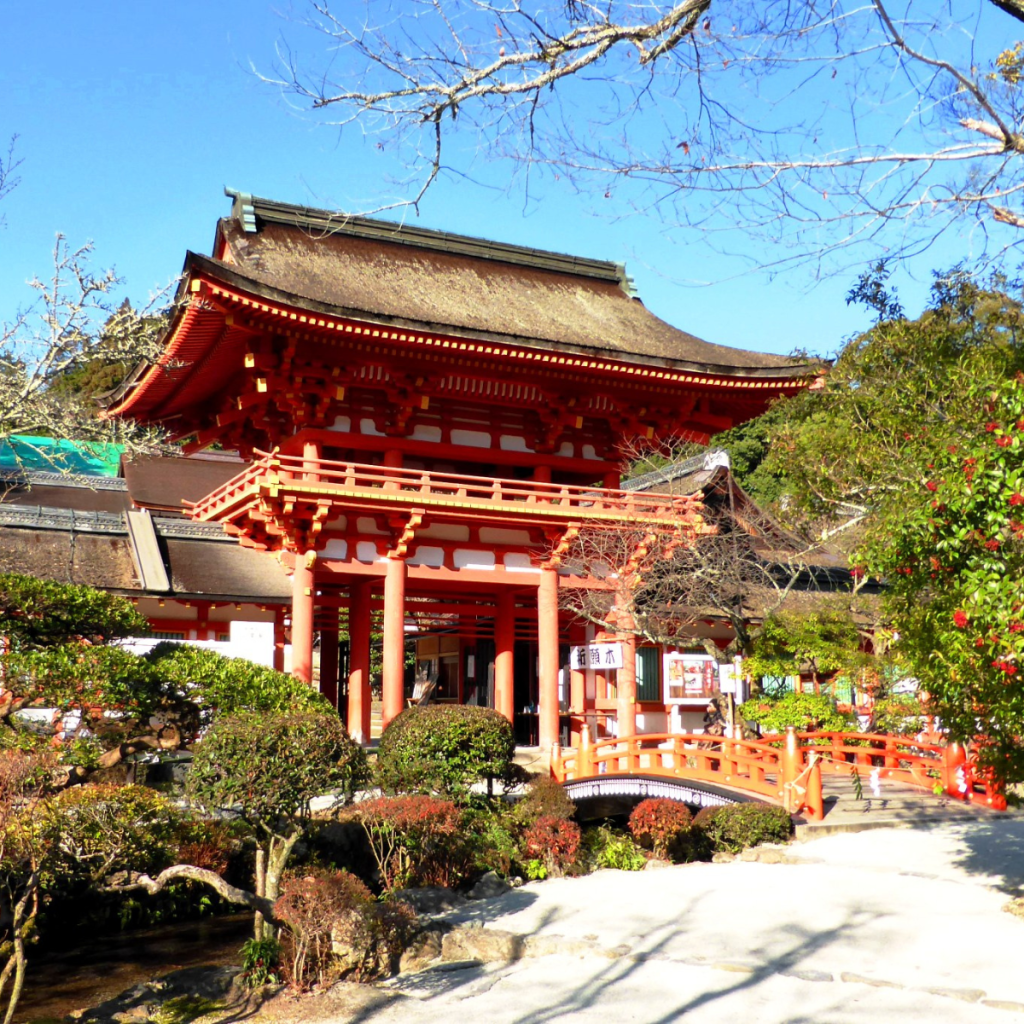
Date: Mid January
Ancient Tradition of Archery in Japan
The Kamigamo Shrine, situated on the north side of Kyoto, served as the venue for the annual event called Musha Jinji on January 16. The ceremony is a captivating spectacle that combines traditional archery and Samurai warrior aesthetics, designed to rid the space of bad luck and evil spirits as part of ushering in the New Year. This fascinating display forms an integral part of the ancient archery tradition in Japan, initially practiced by samurai warriors during feudal times.
Today, archery has assumed diverse roles in contemporary Japanese society, both as martial arts disciplines like Kyudo and Equestrian Archery (Kyuba-Jutsu), and special ceremonies held year-round at different Shinto Shrines.
Ogasawara-Ryu Spearheads Musha Jinji
The Ogasawara-Ryu led this colorful event, an ancient archery school with an illustrious history spanning more than 800 years. ‘Musha’ translates from Japanese as ‘warrior’ or ‘samurai’, while ‘Jinji’ means ‘shoot’. In conducting the ritual, the Ogasawara-Ryu continues an important cultural practice aimed at promoting their ancient craft and instilling a sense of unity among community members.
Archery demonstrations are key features of the ceremony, with participants donning old-style court attire and engaging in a series of precise shooting actions – each symbolic gesture seeking to expel malevolent entities while attracting prosperity into the New Year.
Public Participation at Musha Jinji
The celebration attracted considerable public interest, drawing attendees from Kyoto and other cities. Those curious to witness firsthand this intricate cultural celebration and participate in its energy could access it easily.
Interested individuals staying near JR Kyoto Station could reach Kamigamo Shrine by taking City Bus No.4 from boarding location A2. After a roughly 52-minute ride through scenic city locales, they would arrive at Kamigamo Jinja Mae – their final stop before entering the shrine.
Alternatively, people nearby Shijo Street (including districts such as Gion or Omiya) could opt for City Bus No.46, which also ends its journey at Kamigamo Jinja Mae.
Relevance for Cultural Heritage Preservation
Even as modernization sweeps across Japan, events such as Musha Jinji ensure that crucial aspects of historical culture remain alive and appreciated. The inclusion of ancient practices into Japan’s yearly ceremonial calendar offers unique insights into enriched traditions passed down through generations. They serve both educative as well as entertainment functions, invoking sentiments of nostalgia while inviting spectators to participate actively in preserving shared cultural heritage.
Yutate Kagura
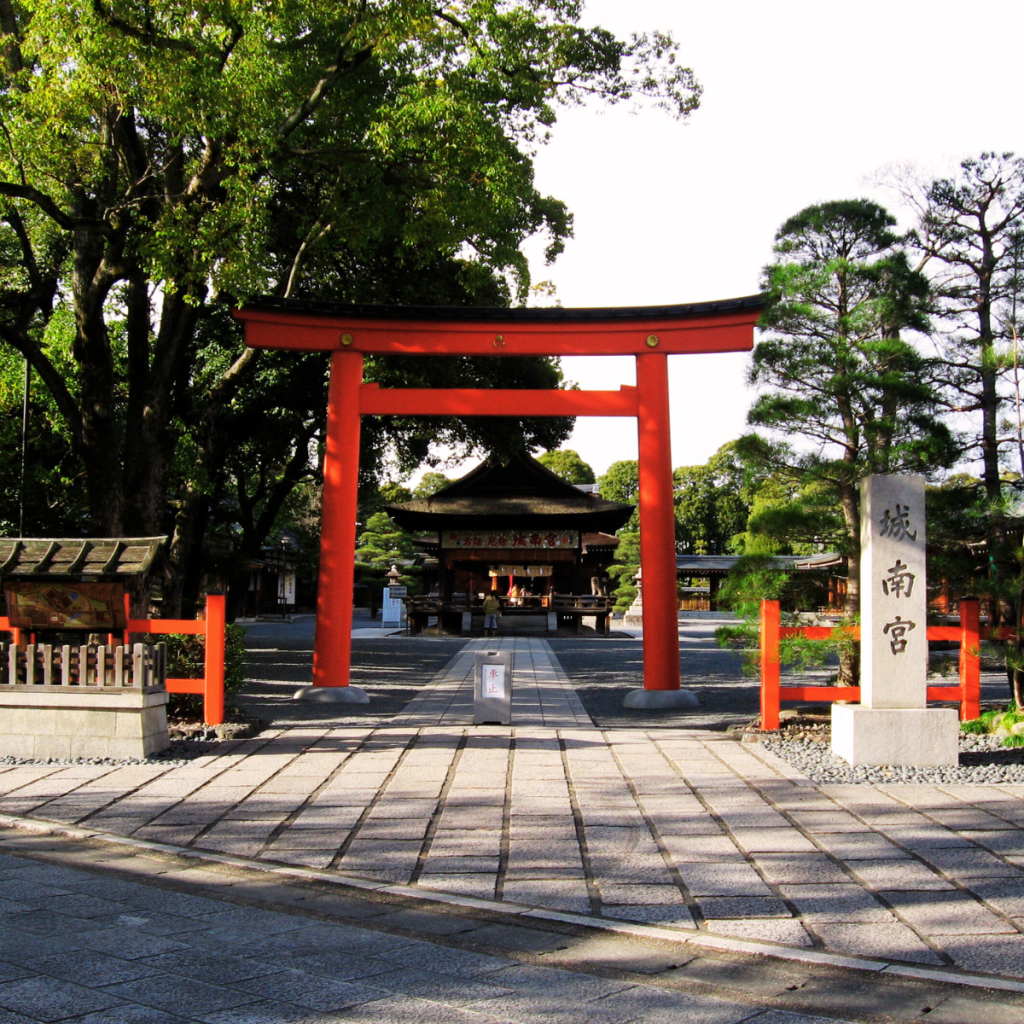
Date: January 20th
Unfolding Yutate Kagura
Yutate Kagura, also known as Yu Kagura or Shimotsuki Kagura, is a uniquely Japanese form of religious ritual. Performed with boiling water, this tradition is aimed at preventing diseases and disasters while promoting a rich harvest of five grain crops. This rite also serves the purpose of telling the year’s fortune.
From the preparation of water to its splashing on attendees, each step is imbued with profound meaning reflective Japanese culture and religion. This religious ritual has been passed down for generations becoming a part of Japan’s colourful and rich cultural heritage.
The Significance of Jonangu Shrine in Kyoto
Jonangu Shrine is situated in Fushimi Ward, Kyoto City within the scenic Kansai region of Japan. Constructed during the Heian Period for protecting the nation and the newly moved capital city, today it serves as a place to answer prayers related to removing bad luck originating from ill-fated directions.
Popular within Kyoto’s 5 Shrine Pilgrimage, the shrine also attracts locals and tourists during Hatsumode- the first shrine visit of the year, and Setsubun season. Visitors look forward to prayers and blessings from the chief priest alongside obtaining red seal stamps or amulets.
Besides its spiritual significance, Jonangu Shrine also boasts a picturesque Japanese garden. Renowned as a site for blooming plums, cherry blossoms, and camellia; in spring it holds Shidareume to Tsubaki Matsuri or “Weeping Plums and Camellia Festival.
Kayabuki no Sato Snow Lantern Festival
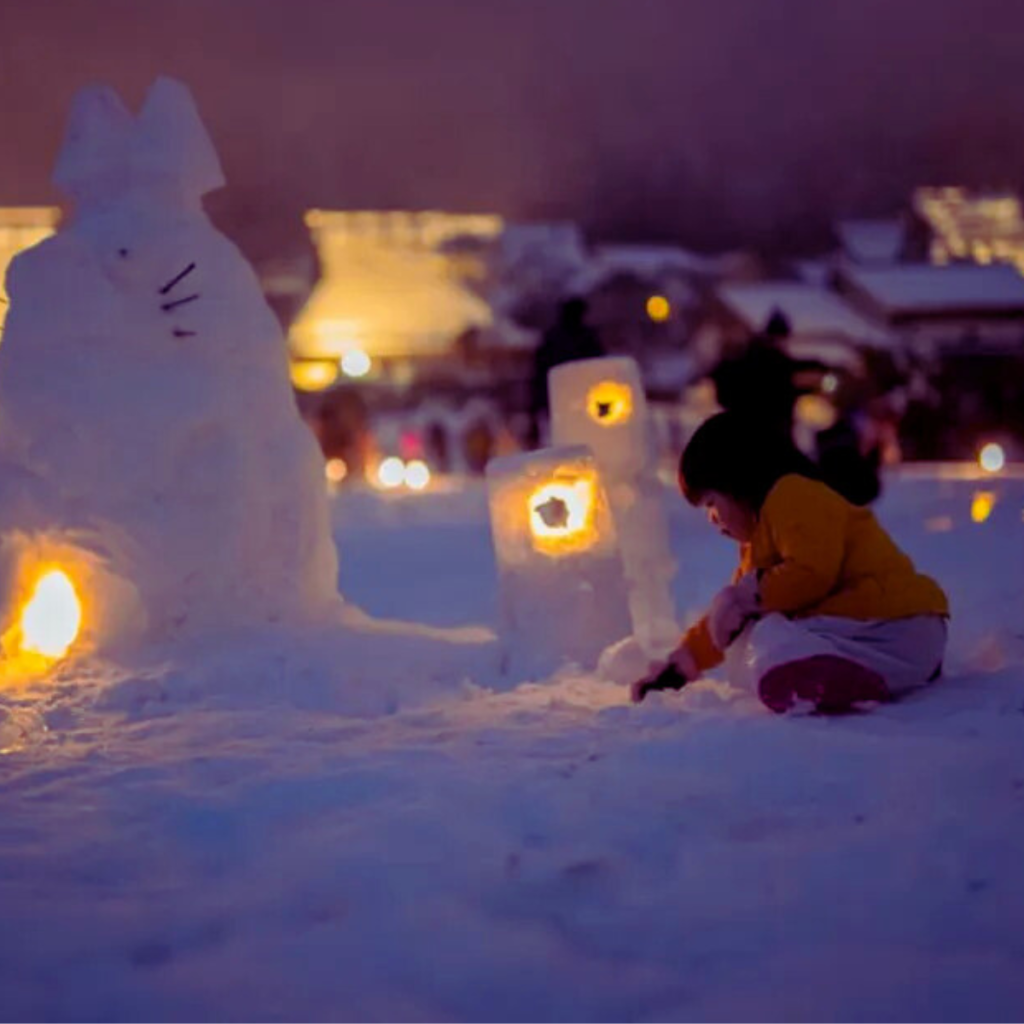
Date: late January -Early February, 2024
Enchanting Display of Snow Lanterns
The Kayabuki no Sato Snow Lantern Festival in Miyama Village comes to life each winter season, drawing thousands of visitors to witness the stunning scenes of snow-covered thatched roofs illuminated by hundreds of lanterns. The enchanting festival features various types of lanterns, such as snow lanterns, Japanese lanterns, flower-patterned lanterns, and LED lanterns. All of these are lit at once, bathing the quiet town in a mesmerizing winter glow.
Illuminated Thatched Houses
As a key highlight of the festival, 18 thatched houses throughout the village are also illuminated during the event. These beautiful scenes present not only a rare opportunity for visitors to bask in the nostalgic atmosphere but also to immerse themselves in Japan’s cultural heritage.
Creative Participation Opportunities
Apart from admiring the captivating views, visitors can actively participate in the festival by creating their own snow lanterns and lining them up at the venue. This engaging activity allows guests to explore their creativity while contributing to the magical ambiance of Miyama’s Thatched Village.
Reaching Miyama Village
Travelers can use public transportation or private options to reach Miyama Village for this enthralling experience. By public transport, take the JR line from Kyoto to Sonobe or Hiyoshi Station and then catch the Nantan city bus to Kita-village. This journey takes approximately one hour. However, as there are no late-return buses available, visitors need to check schedules or make alternative plans using private transport options. Additionally, a special shuttle bus service is available from Sonobe Station during this event.
Annual Winter Tradition
The Snow Lantern Festival at Thatched Village is held annually during the snowy season. Featuring handmade snow lanterns, flower-patterned lanterns with electric lights, and illuminated thatched roof houses, the festival creates a fantastic and nostalgic scenery for locals and visitors to enjoy. This unique and magical event is not to be missed during your winter visit to Japan.